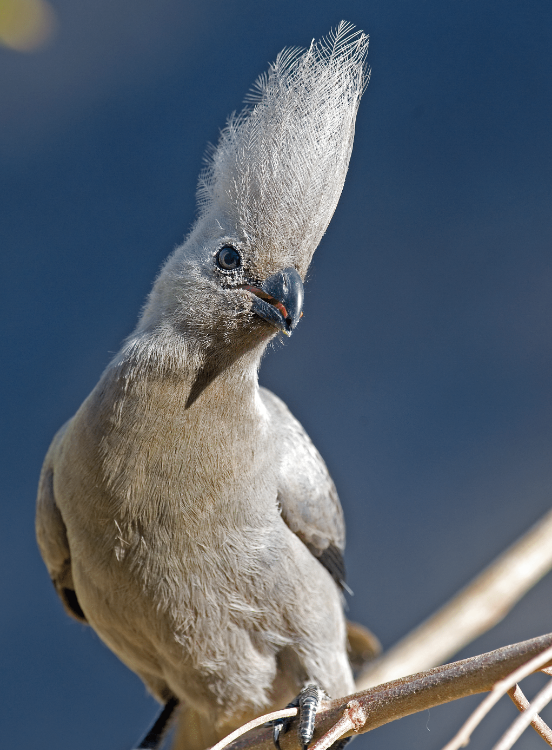Bird’s-eye view – Meyer’s Parrot
December 5, 2012Bird’s-eye view – Black-faced Babbler
December 5, 2012By Pompie Burger
Water Thick-knee, Burhinus vermiculatus
Roberts No 330
The water thick-knee is one of my favourite birds to photograph because of its huge eyes, and, more importantly, the fact that it can stand stock-still for hours. (I think this is the reason for their thick knees, probably an early arthritic change in the knee joint from standing so long.)
Previously it was called dikkop, literally meaning thick head, which was probably a misnomer because ‘blokkop’ (if the Germans will forgive me) would have been much more appropriate. The new name, thick-knee, is also a misnomer; actually; its ankles are thick, not its knees.
There are two thick-knee species in Namibia, the other being the Spotted Thick-knee.
The main difference between them is the pale-grey wing panel and white bar on the wing of the Water Thick-knee. Another differentiating factor is their distribution, the spotted occurring in drier areas, while the Water Thick-knee always occurs near, yes, that is right, water. They are often seen on ‘beaches’ in swamp and riverine areas where they also nest in shallow, non-specific scrapes in the sand.
When disturbed, the Water Thick-knee walks away, or, depending on the size of the intruder, it might run or fly.
When it feels threatened because it is raising chicks, it will use the typical ‘injured’ position, lying down with one or both wings spread out flat on the ground.
Its big bulging eyes suit its nocturnal foraging habits. The eyes are also equipped with a reflective layer of crystals in the retina to improve night vision. Like most ‘night’ birds, it has a typical far-carrying call to communicate and proclaim its area. Its hearing ability matches its excellent eyesight for its nocturnal excursions.
During World War II Water Thick-knees were called commando birds because they were often flushed out on night expeditions. During the day they are usually quite sedentary, so much so that the Australian species can apparently be picked up without it raising an eyelid (what else would you expect from an Australian)?
About the author:
Based in Windhoek, Pompie Burger is an orthopaedic surgeon whose part-time passion is photography, in particular wildlife, and specifically birds. This regularly takes him to the most remote corners of the country, resulting in riveting images and articles.
Pompie is the author and photographer of the coffee table book Birds of Namibia, which was published in 2008. The book contains articles and photographs which attest to the insight and knowledge of an accomplished observer.
Read more of his articles in our Birding Section.
This article appeared in the Oct/Nov ‘09 edition of Travel News Namibia.


